 |
SRGC Bulb Log Diary |
| Home Recommend This Site To A Friend |
|
BULB LOG 44 29rd October 2003
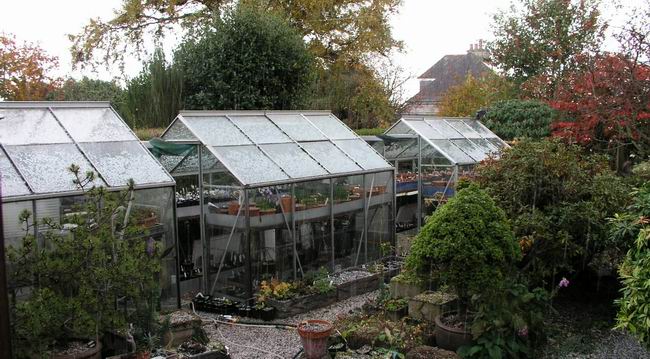
Bulb houses sleet The oncoming winter is announcing its imminent arrival with lower temperatures and sleet and hail showers which turn to snow at higher elevations - some roads in Aberdeenshire were under 10cms of snow. The crocus and cyclamen are still flowering under the protection of the bulb house although the Crocus have now passed their peak period and the flowering will start to tail off now. 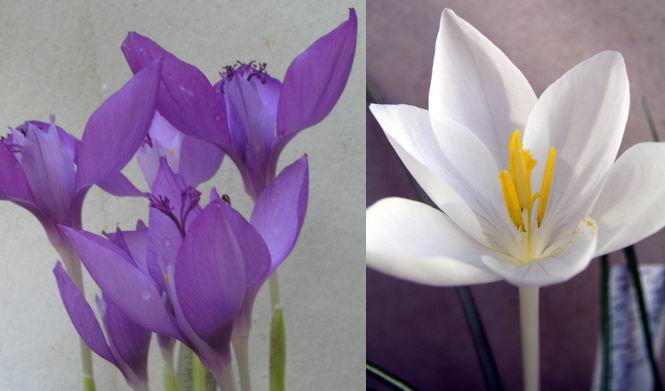
C. banaticus & goulimyi A nice dark form of C. banaticus, on the left, one of the select forms that we have chosen to grow in a pot and C. goulimyi 'Mani White' an interesting tall, white form of this good autumn species that we were given a couple of years ago. 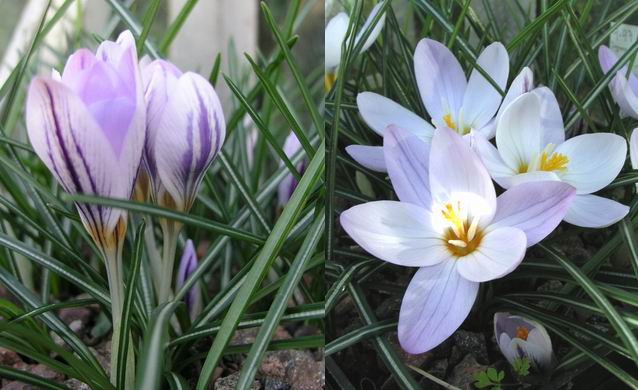
Crocus laevigatus Definitely one of my favourite autumn flowering crocus is Crocus laevigatus. This is a seed raised selection that have varying degrees of dark feathering on the reverse of the tepals and a lovely shaped flower when it opens in the sunshine - the white pollen is one of the features of this species. 
C. clusii & robertianus Crocus clusii (left) is happy in a pot or the garden this form goes under the cultivar name of 'Poseidon'. On the right is C. robertianus a lovely species that has the unusual habit of spiraling its tepals when it shuts at night rather like a gentian flower does. This is not a feature that I have noticed in any of the other Crocus we grow. I will have to pay close attention to see if this is a unique characteristic of C. robertianus. 
Narcissus chitted 10.03 I had forgotten about the chitted bulbs, that I have shown you in previous logs, until this week. As you can see the new bulbs are forming well and have all started to produce roots so it is time to plant them. I treated them just like any young bulbs ( do not try and remove the old scales) planting them well down in a pot of our general mix and gave them a good watering . As you can see I have achieved an nine fold increase in this case. 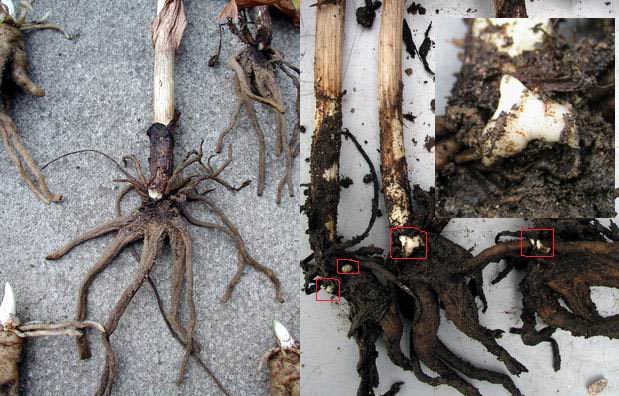
Dactylorhiza tubers Also referring back to a previous log 37 when I showed you how to divide Dactylorhiza tubers I said that it was well worth replanting the old, dying tuber as it may produce further off-sets. On the left is the old tuber with the new tubers removed (taken in August) and on the right you can see the small secondary tubers that are forming now. Each one has produced a further two tubers, a good bonus I am sure you will agree. 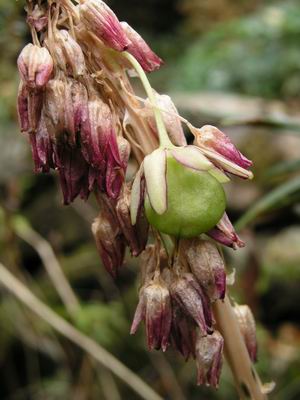
Eucomis bicolor seed Plants always have this way of making you look stupid. When I showed you Eucomis bicolor in an earlier log I said that it had never increased nor set seed for us. Well the plant must have over heard me as it has now produced one seed pod, a first in about fifteen years of being with us. 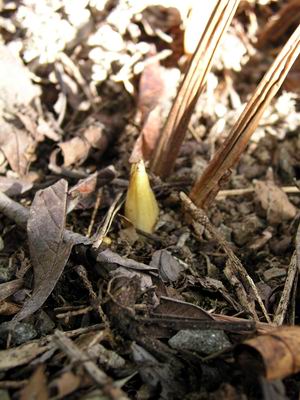
Trillium nose. Even though the leaves on our trilliums have not long died back, next years' growth is poking through the ground. It will sit like this through all the winter can throw at it until next spring. As a woodland plant it would receive a generous mulch of fallen leaves in the wild so I give it a good mulch of composted shredding material to help protect it from the worst of the frost. 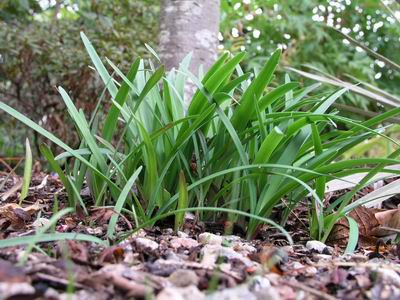
Ipheion Alberto Castillo The leaves of Ipheion Alberto Castillo are also well advanced in the garden now, this is normal for this plant and they are perfectly hardy. The slugs do not seem to be too fond of eating them either - perhaps they do not like the onion flavour that they possess. I will finish on a bright seasonal note with this lovely bright shiny red seed head of an Arisaema that is lying in the garden waiting to be collected. 
Arisaema seed head ^ back to the top ^ |